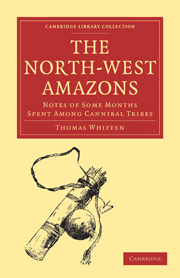Book contents
- Frontmatter
- PREFACE
- Contents
- LIST OF ILLUSTRATIONS
- CHAPTER I
- CHAPTER II
- CHAPTER III
- CHAPTER IV
- CHAPTER V
- CHAPTER VI
- CHAPTER VII
- CHAPTER VIII
- CHAPTER IX
- CHAPTER X
- CHAPTER XI
- CHAPTER XII
- CHAPTER XIII
- CHAPTER XIV
- CHAPTER XV
- CHAPTER XVI
- CHAPTER XVII
- CHAPTER XVIII
- CHAPTER XIX
- CHAPTER XX
- APPENDICES
- LIST OF BOOKS REFERRED TO
- INDEX
- Plate section
- Frontmatter
- PREFACE
- Contents
- LIST OF ILLUSTRATIONS
- CHAPTER I
- CHAPTER II
- CHAPTER III
- CHAPTER IV
- CHAPTER V
- CHAPTER VI
- CHAPTER VII
- CHAPTER VIII
- CHAPTER IX
- CHAPTER X
- CHAPTER XI
- CHAPTER XII
- CHAPTER XIII
- CHAPTER XIV
- CHAPTER XV
- CHAPTER XVI
- CHAPTER XVII
- CHAPTER XVIII
- CHAPTER XIX
- CHAPTER XX
- APPENDICES
- LIST OF BOOKS REFERRED TO
- INDEX
- Plate section
Summary
The armoury of the Indian contains, for the most part, weapons designed for primitive hand-to-hand encounter with either man or beast. The sixty or more feet a blowpipe dart will carry; the two hundred feet, which is the outside range of an arrow from the most powerful of his bows, would be futile in any country less enclosed than these dense woodlands. Even here success in intertribal conflict is a matter of personal dexterity rather than mechanical accomplishment. It is true that the Witoto near the rubber districts have ordinary muzzle-loading scatter-guns. Other tribes have a few, a very few rifles, and some Brummagem fowling-pieces, usually with single barrels. But the rifle cannot be said to have won its way into unchallenged favour. When an Indian does possess a gun he is exceedingly chary of using it; his chief idea is to save his powder and shot. The Menimehe have neither rifles nor scatter-guns; they consider that firearms frighten the game, and prefer their own throwing-javelins, their bows, and their arrows.
The Indian weapons of offence may be said then to consist of the sword, the bow, and the spear. There is no difference between war spears and arrows and those used against the larger wild animals. For defence the Menimehe carry a small club, or life-preserver, and the Jivaro and some of the tribes near the Napo river, use a circular shield covered with tapir hide like the Uaupes river Indians.
- Type
- Chapter
- Information
- The North-West AmazonsNotes of Some Months Spent Among Cannibal Tribes, pp. 115 - 125Publisher: Cambridge University PressPrint publication year: 2009First published in: 1915



